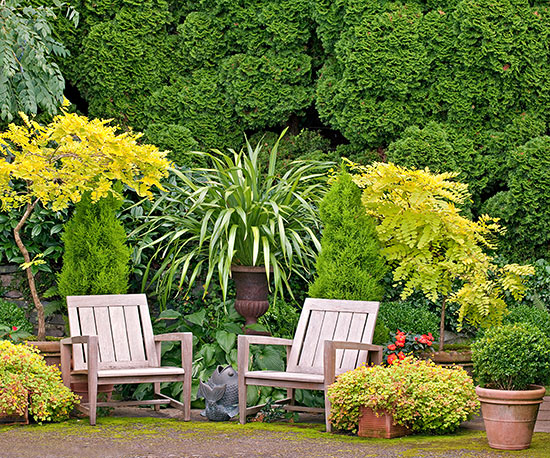
A landscape project can range in cost from a few hundred dollars to many thousands. Regardless of your budget, it will pay you to spend some time thinking about ways you can make the best use of your landscaping dollar. The tips below may save you money, or they may let you spend more on the landscaping features that will bring you the most pleasure.
Even more tips for trimming your landscape budget!
continue reading below
- Formulate a plan. A well-thought-out design and a plan of action save money and time and reduce stress.
- Get bids. If you work with contractors, get at least two itemized bids for each project and compare them. Ask for a written guarantee of the work. Set start and finish dates.
- Don't skimp on the quality of materials or contractors. Flimsy construction will cost more in time and money to correct mistakes or replace materials.
- Salvage as much as possible in an existing landscape. Before you dig up plants or tear down structures, first think of ways to preserve them. Even a crumbling concrete sidewalk can see new life as a stepping-stone path or garden edging.
- Move existing trees and shrubs, if necessary, to protect them during construction or to allow them to thrive in a better location.
- Prepare and improve the soil by working in lots of organic matter, such as compost, rotted manure, and chopped leaves. This is one of the wisest landscaping investments possible.
- Do some of the work yourself, not only to save on the cost of installation but to invest personal pride in the project. Hire teenagers to help you shovel gravel or lay sod -- to save your back and your pocketbook.
- Buy the largest trees that your budget allows. They require the most years of any plant to mature but add the most value to the landscape.
- Weigh the advantages of sod, grass seed, and groundcover. Sod provides an instant lawn but at a premium price compared to grass seed.
- Grass seed requires at least six months to become established, but it germinates and grows easily; it's one of the best ways to save money.Increasingly popular lawn alternatives, such as low-growing wildflowers or groundcovers cost more than turfgrass up front with little maintenance expense. Gravel is another affordable, carefree alternative.
- Ask an expert for help at any stage in the planning or installation.
- If you're running water or power lines to a new area of the garden, install more water spigots and electrical outlets where they may come in handy.
- Get expert advice from your county extension service or a garden center when selecting the best plants for your garden. Learn what they will need to survive and thrive. Native plants, already adapted to the climate, generally need less water and attention.
- Avoid impulse buying. Keep a copy of your garden plan handy and take it along to the garden centers. Make sure plant purchases fit the plan.
- Consider more than just cost when selecting materials. Free wood chips may seem like a good deal for a path, but concrete won't wash away in a hard rain, and it looks tidy for years with little care. In addition to quality and maintenance factors, compare energy savings, comfort, safety, and other aesthetic qualities.
- If space is tight, choose features that do double duty, such as benches that open for storing cushions or play equipment or an arbor that supports a swing.
- Rent or borrow expensive tools that you won't use much, such as a rototiller, power washer, or paint sprayer. Go together with several neighbors to purchase a pricey tool that you can all share, such as a chipper/shredder, snowblower, or chain saw.
- Use your landscape to save on grocery bills. Grow the fruits, vegetables, and herbs that your family enjoys most.
More Ways to Stretch Your Landscaping Budget
Plants that Give You the Most Bang for Your Buck






